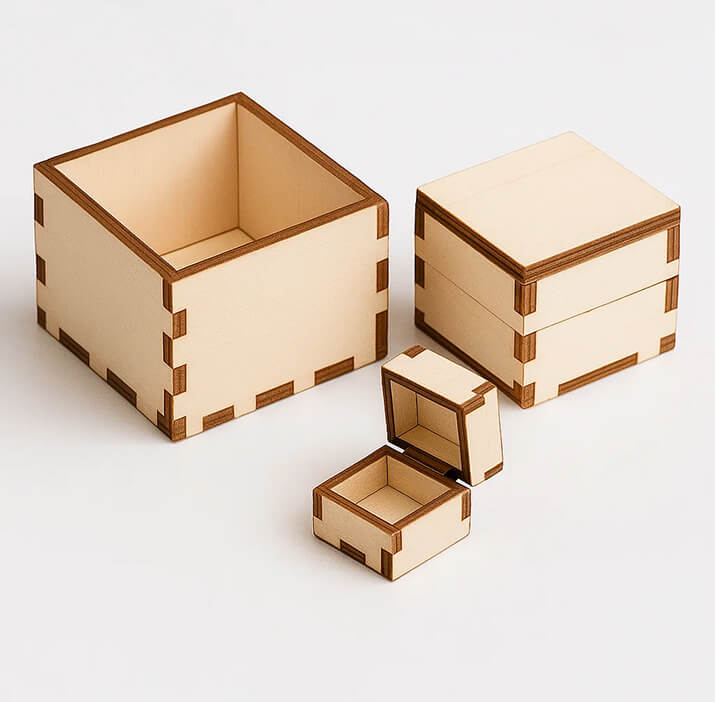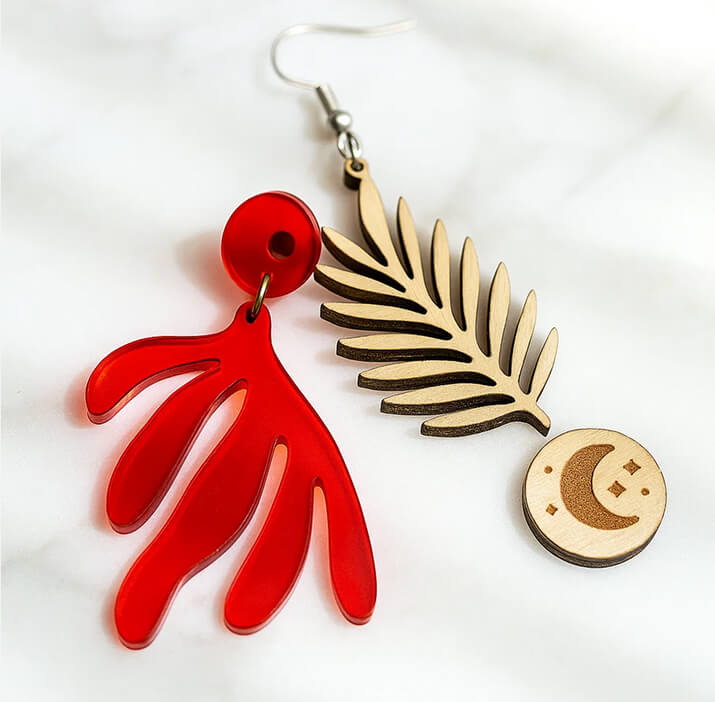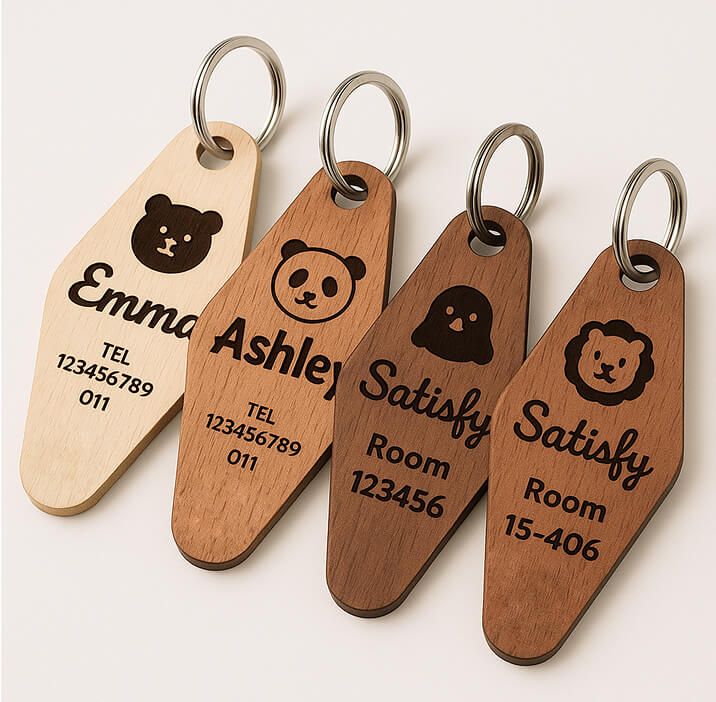![[Laser cut and engrave] Christmas Ornament Jig with Risers](https://image-res.xtool.com/resource/xtool/community/attachment/xtool-community/4cff9430-0df3-46b0-b611-2261890c57ac_IMG_5857.jpeg?x-oss-process=image/resize,w_1200,h_900,limit_0/interlace,1/format,webp/auto-orient,1)
Christmas Ornament Jig with Risers

Information
I found myself creating a bunch of Christmas ornaments this holiday season. That's no surprise. Some were custom, but others were standard, flat, round ornaments. So as the OCD person I am, I thought, "I need a fixture for these!" Some folks call them jigs, but they're really fixtures.
In particular, I wanted to create some clear acrylic ornaments, and I haven't yet been successful in etching or engraving on clear acrylic with my M1. After reading a bunch about flash back, I knew what I had to do. I set out to create a fixture for engraving round ornaments that would raise them above the base plate or honeycomb panel to avoid burning the underside of the material.
This How-to runs through the process of making these fixtures (or "jigs," if you must). I designed one for 3½" round ornaments and another for 3" rounds. Hopefully these will help you create holiday ornaments in the years to come. I've already seen better results than I've ever had before on clear acrylic.
Instruction
Step1: Process the top layer
First off, pick your materials. This fixture is designed for 1/8" or 3mm basswood plywood. For this type of project, your board should be completely flat and not warped.
If you're using a large sheet, I recommend trimming it to fit in your engraving area. I typically start with 12 x 12ish basswood plywood and trim it to fit flat on my M1 honeycomb panel. My design file is optimized for that layout.
With your plywood sheet in the top left corner of your engraving area, select the Trim canvas first. Each canvas includes an ignored boundary box, which I use to frame against the material I'm using. If you want to do the same, temporarily set it to Output then run framing. Be sure to Ignore the boundary layer again before processing the trim cut.
Choose which fixture you want to use: 3" or 3½". Each has two parts—a top layer and a lower layer. The top layer includes cutouts for the ornaments with a notch at the top to accommodate a neck while still leaving a gap to easily adjust or remove your ornament material. The bottom layer has slightly smaller cutouts to leave a ridge for seating your ornaments. Both also have cutouts for anchor pins, cut into pieces you can glue together to create risers for your fixture.
Select the desired Top canvas, and frame on your board. If you're securing your board with pins or tape, take care to avoid overlapping any area of the board that will be scored or cut. Now process the job. I used air assist to keep the surface nice and clean.
Once that completes, you'll have…
- the top layer of your fixture,
- six round cutouts (maybe you can use them for another project—the backs should be clean),
- six notch cutouts, and
- 8 small rectangle and triangle pieces (keep these around for later).
Step2: Process and glue the bottom layer
You may be thinking, “I'm done now.” But I recommend completing this step, too, whether you plan on adding the risers to keep clear acrylic floating above the laser bed surface or not, the bottom layer adds rigidity, additional guides, and a small lip to keep your ornament material from touching the surface and potentially scratching.
Repeat the steps above for the bottom layer that applies to the size you're making—3" or 3½":
- First trim your board, if necessary, using the Trim canvas
- Frame and process the bottom layer
- Be sure to capture and retain all the little triangles and rectangles—you should have 8 more rectangles and 8 more triangles
Now apply some permanent glue to the bottom layer, taking care to cover the interior areas without getting too close to the edges. I used Aleene's Quick Dry Tacky Glue. Make sure everything lines up before setting it aside to cure. The top of each cutout should align perfectly between both layers, and you should see a small lip around the bottom and shoulders of each cutout. Use a wet cloth or paper towel to clean any residual glue that squeezes out between the layers, particularly along the ridges where your ornament will rest.
Use clamps or place some weight on top of both layers while it dries. Be careful when applying your clamps or weight not to nudge the layers out of alignment.
If you don't plan on using this fixture to engrave on clear acrylic ornaments, you're done! Skip to the end for some tips on using your new fixture.
Step3: Assemble and add risers
If you plan to engrave on transparent acrylic, you'll want to follow this next step to add risers to your fixture. These lift your ornament material from your engraving bed by about 9 mm.
Group the salvaged rectangles and triangles cut from the corners and anchor holes of each layer into stacks of three. Using a strong adhesive, carefully glue each stack of three together, taking care to ensure the edges are square. You may want to push against a flat surface or corner brace lined with parchment paper or some other substance that won't stick to the glue. I used braces to keep the pieces together while curing. You should have four rectangular and four triangular risers. Let these dry overnight.
Next, glue the risers into the notches cut from the bottom layer. The rectangles go next to the anchor holes, and the triangles go in the corners. Try to ensure the top and left risers align flush to the top and side squarely. This will help you align the fixture in your engraver. Again, apply some weight or clamps and allow this to dry overnight before using.
Step4: Tips to Make Some Ornaments!
Now that you have your fixture for engraving ornaments, here are some tips for how to best use it:
- When inserting anchor pins, position the arm for the pins toward the scored area over the risers—not away from the risers or impeding one of the ornament positions.
- Position your material pieces (round or ornament-shaped) so they're resting on the ledges for each slot.
- Use the vertical scores to help you align your ornaments.
- On the 3" fixture, be sure to position material in the right position of the middle row—when used on the M1 honeycomb panel, the auto-measure point will hit right on your material. For the 3½" fixture, you'll need to first position the riser so one of your ornaments under the measuring dot to auto-measure the material height; then you can position and anchor the fixture as you'd like.
- Use the attached Round ornament template file to position and frame your ornament designs.
- Frame the ornament boundaries, which should align with the edge scores around each ornament slot.
- Avoid designs that bleed over the edge of the material to prevent damaging the fixture itself.
- Always use a fixture with risers to avoid flash back on transparent acrylic.




